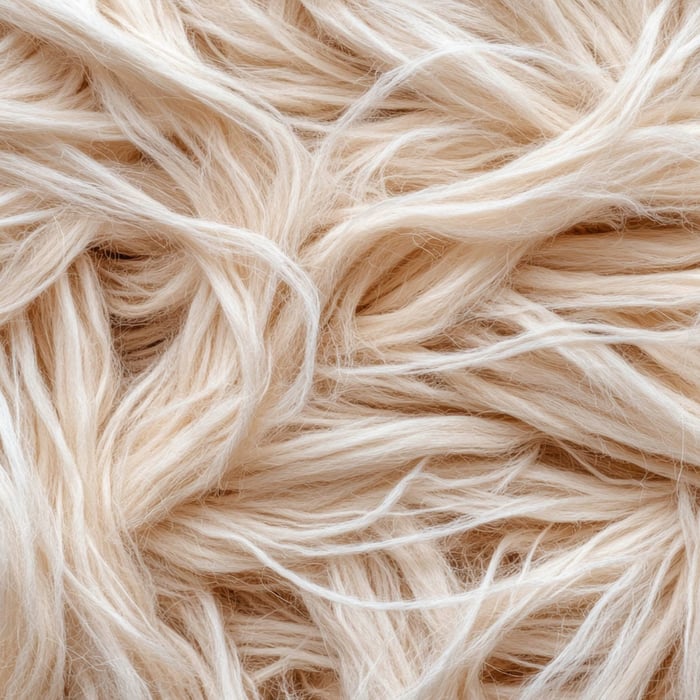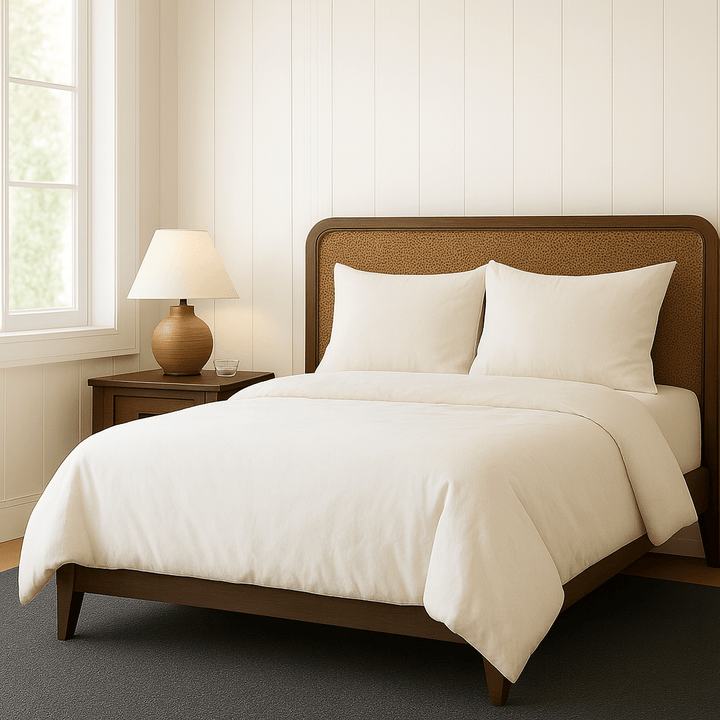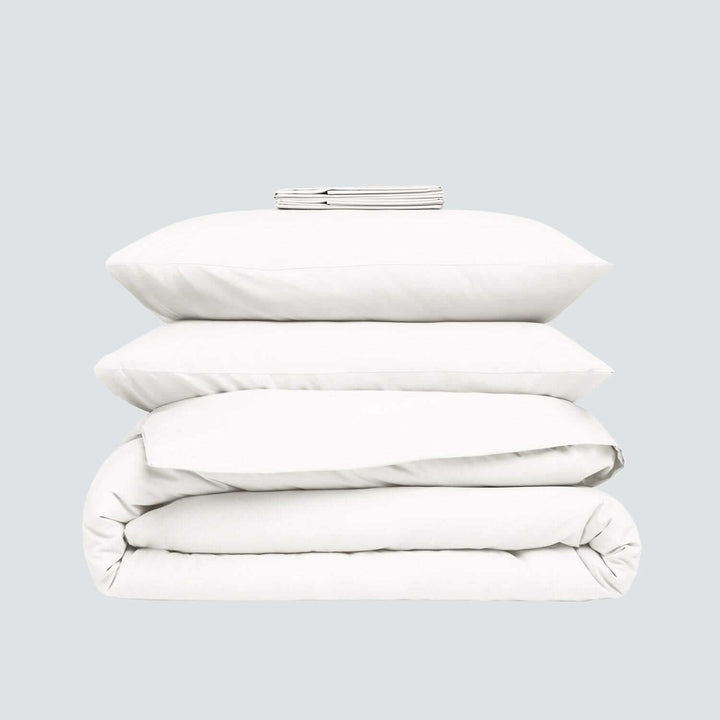Table of Contents
- Understanding Hypoallergenic Bedding
- Common Allergens Found in Traditional Bedding
- Health Benefits of Allergenic-Free Bedding
- How Clean Bedding Can Improve Sleep Quality
- Materials Used in Hypoallergenic Bedding
- Certifications and What They Mean for Hypoallergenic Performance
- Choosing the Right Hypoallergenic Bedding for Your Needs
- Maintenance and Care for Hypoallergenic Bedding
- Comparing Hypoallergenic Bedding Brands
- Cost vs. Value: Is Hypoallergenic Bedding Worth It?
- Conclusion: Embrace Allergy-Free Sleep with Hypoallergenic Bedding
- FAQs on Wool Duvet Inserts, Comforters & Sustainable Bedding
If you’re waking up congested, itchy, or just feeling “off,” your bedding might be the hidden trigger. Hypoallergenic bedding helps reduce irritation, keep allergens out of your sleep environment, and support softer, deeper rest. But not all allergy-friendly bedding is created equal — especially when some brands rely on synthetic fibres and chemical finishes to make “hypoallergenic” claims.
Your strongest defence? Clean, natural, chemical-free materials — specifically GOTS + OEKO-TEX certified organic cotton and regenerative New Zealand wool. This combination delivers true natural hypoallergenic performance without the chemical coatings, microplastics, or irritants found in traditional bedding.
Let’s walk through everything you need to know.
Understanding Hypoallergenic Bedding
At its core, hypoallergenic means bedding that is less likely to trigger allergies, irritation, or respiratory symptoms.
True allergen-free bedding relies on:
Breathability
Moisture control
Chemical-free fibres
Dust-mite resistance
Clean, non-reactive materials
This is why organic bedding made from cotton and wool consistently outperforms microfiber or polyester “anti-allergy” products.
Regenerative Organic Cotton Sheet Set – Soft, Breathable & Sustainable

$189.00
Softer Sheets. Cleaner Sleep. Our organic cotton sheet set are simply better for the earth, and for your sleep. Grown on low-impact regenerative farms that actively heal the soil, our cotton is then woven and finished responsibly. This process eliminates… Read more
Common Allergens Found in Traditional Bedding
Most people don’t realise their bedding can trap:
Dust mites (a major cause of nighttime congestion)
Pet dander
Mold and mildew spores
Synthetic chemicals from wrinkle-resistant or anti-static finishes
Fragrance and VOC residues from factory treatments
Microplastics from polyester and microfiber
If you’re sensitive, eczema-prone, or a hot sleeper, these irritants can pile up fast.
 GOTS Organic Cotton Fiber—naturally hypoallergenic, dust-mite resistant, and perfect for cleaner, allergy-free sleep.
GOTS Organic Cotton Fiber—naturally hypoallergenic, dust-mite resistant, and perfect for cleaner, allergy-free sleep.Health Benefits of Allergenic-Free Bedding
Switching to allergy-free bedding has real, noticeable benefits:
Reduced congestion and easier breathing
Less skin irritation and fewer flare-ups
Fewer night sweats (and sweat-related irritation)
Less exposure to chemicals and VOCs
Fewer dust mites
Better humidity balance
Your regenerative wool comforters add another layer: natural antimicrobial and mold-resistant properties — no chemicals needed.
How Clean Bedding Can Improve Sleep Quality
Clean, allergenic-free bedding doesn’t just reduce symptoms — it improves overall sleep quality:
Keeps your bed cooler and drier
Minimises inflammation triggers
Reduces nighttime coughing or stuffiness
Avoids harsh chemicals touching your skin
Supports deeper, more restorative sleep cycles
Natural allergy-friendly bedding tends to feel better too — softer, more breathable, and more stable across seasons.
Materials Used in Hypoallergenic Bedding
Here’s where your brand stands out: the materials matter.
1. GOTS + OEKO-TEX Certified Organic Cotton (Your Sheets & Duvet Covers)
This is the gold standard for natural hypoallergenic sheets.
GOTS Certification ensures:
Cotton is organically grown (no pesticides)
No chlorine bleaching
No allergenic dyes
No formaldehyde or toxic finishes
Entire supply chain meets environmental and ethical standards
OEKO-TEX Certification ensures:
The finished fabric is tested for over 300 harmful substances
No heavy metals, VOCs, PFAS, azo dyes, or allergenic dyes
Safe for direct skin contact — even for babies
Why it matters for hypoallergenic bedding:
Organic cotton keeps your sleep environment cleaner, softer, and safer for people with sensitive skin, eczema, dermatitis, or general sensitivity.
Organic Wool Comforter | Made in New Zealand, Breathable All-Season Comfort

$342.00
$380.00
Sleep naturally better with our organic wool comforter Unlike down or synthetic comforters that trap heat, this lightweight wool design wicks away moisture and prevents overheating, so you stay cool, dry, and deeply relaxed. It’s comfort that feels effortless yet… Read more
2. Regenerative New Zealand Wool (Your Comforters)
Regenerative wool is one of the most naturally hypoallergenic fibres in the world.
Why regenerative wool is ideal for hypoallergenic comforters:
Dust-mite resistant (mites can’t survive in wool’s dry microclimate)
Anti-microbial, naturally
Mold- and mildew-resistant
Breathable + moisture-wicking
Chemical-free and fragrance-free
Contains no synthetics or microplastics
Synthetic “hypoallergenic” comforters often trap allergens — wool repels them.
Certifications and What They Mean for Hypoallergenic Performance
This section is specifically about your bedding — the part you asked for.
GOTS (Global Organic Textile Standard)
For your sheets and duvet covers, GOTS certification guarantees:
95–100% organic fibre content
No toxic dyes or finishes
No chlorine bleach
No endocrine disruptors
No harsh processing chemicals
Textile safety from farm → finished fabric
How this supports hypoallergenic bedding:
It eliminates the chemical triggers commonly found in synthetic or non-organic bedding. For sensitive sleepers, this is huge.
OEKO-TEX Standard 100
This certification tests the finished sheets and covers for substances linked to irritation and allergic reactions.
OEKO-TEX bans:
Allergenic dyes
Heavy metals
PFAS
VOCs
Formaldehyde
Pesticide residues
Harsh textile chemicals
How this supports hypoallergenic bedding:
It ensures your sheets and comforter shells are safe against bare skin — essential for allergy-prone sleepers.
Regenerative Wool’s Natural Certification Backing
While wool doesn’t use GOTS, regenerative wool is inherently:
Non-toxic
Chemical-free
Free from microplastic finishes
Low-irritant
Naturally antimicrobial
Your supply chain is demonstrably low-impact and toxin-free, which acts as a natural hypoallergenic safeguard.
Choosing the Right Hypoallergenic Bedding for Your Needs
Here’s a simple guide:
If you’re sensitive or eczema-prone →
Get GOTS-certified organic cotton sheets.
If you have dust-mite allergies →
Choose a regenerative wool comforter with an organic cotton cover.
If you’re a hot sleeper →
Use wool — it regulates temperature and moisture better than anything else.
If you want the cleanest, non-toxic option →
Choose natural, chemical-free, organic materials only.
Maintenance and Care for Hypoallergenic Bedding
Care affects allergen levels too.
Sheets & Duvet Covers
Wash weekly
Use fragrance-free detergent
Skip fabric softeners
Wash hot if you have allergies
Dry in sunlight when possible (natural antimicrobial effect)
Wool Comforters
Air out monthly
Use a duvet cover
Spot clean only
Wool naturally resists dust mites, mold, and bacteria — no heavy maintenance needed
This keeps your bedding naturally allergy-free.
Comparing Hypoallergenic Bedding Brands
When comparing brands, look for:
Natural fibres over synthetics
Organic certifications
No chemical finishes
Transparent sourcing
Breathable construction
Red flag phrases:
“Hypoallergenic microfiber sheets”
“Anti-allergy polyester”
“Chemical dust-mite treatment”
If a brand won’t disclose fibre content, skip it.
Sustainable & Regenerative Bedding Bundle | No More Night Sweats, Just Deeper Sleep

$598.40
$748.00
Cooler Nights & Deeper Sleep — Every Night Upgrade your rest with the only sustainable bundle designed with regenerative New Zealand wool and organic cotton for all-season comfort. This eco-friendly combo is made to naturally wick away heat and moisture,… Read more
Cost vs. Value: Is Hypoallergenic Bedding Worth It?
Yes — especially when it’s natural.
Value highlights:
Longer-lasting materials
No need for allergy sprays or special covers
Better temperature regulation
Cleaner for your lungs and skin
No microplastics or toxic finishes
Better for kids and sensitive sleepers
Eco-friendly and biodegradable
Better long-term sleep quality
Natural fibres deliver true long-term value — not short-term fixes.
Conclusion: Embrace Allergy-Free Sleep with Hypoallergenic Bedding
Hypoallergenic bedding is more than a label — it’s a commitment to clean materials, fewer irritants, and better sleep.
Your pairing of:
GOTS + OEKO-TEX organic cotton sheets, and
Regenerative New Zealand wool comforters
creates one of the purest, most naturally hypoallergenic bedding systems available today.
No chemicals.
No synthetics.
No microplastics.
Just clean, breathable, allergy-free sleep — the way nature intended.
Explore Our Hypoallergenic & Allergy-Free Bedding Collection
FAQs on Wool Duvet Inserts, Comforters & Sustainable Bedding
What makes bedding “hypoallergenic”?
Hypoallergenic bedding is designed to reduce common irritants like dust mites, mold, bacteria, and chemical residues. Natural fibres such as organic cotton and regenerative wool breathe better, stay drier, and avoid harsh finishes—making them safer for sensitive skin and allergy-prone sleepers.
Are organic cotton sheets really better for allergies?
Yes. GOTS and OEKO-TEX certified organic cotton sheets contain no harmful dyes, chemical coatings, or pesticide residues. They’re breathable, naturally gentle on skin, and ideal for people with eczema, dermatitis, or nighttime congestion.
How is regenerative wool hypoallergenic?
Regenerative wool naturally resists dust mites, mold, mildew, and bacteria. It regulates temperature and moisture, creating an environment allergens can’t thrive in. It’s also chemical-free and contains no microplastics or synthetic fillers.
Is hypoallergenic bedding good for sensitive skin?
Absolutely. Allergy-free bedding made from organic cotton and wool avoids irritants found in synthetic fabrics—like resins, fragrances, and wrinkle-resistant coatings—making it ideal for eczema, dermatitis, and reactive skin.
Does hypoallergenic bedding help with dust-mite allergies?
Yes. Wool is naturally dust-mite resistant because it stays cool and dry, while organic cotton sheets allow airflow and don’t trap moisture. Together, they significantly reduce mite activity and nighttime allergy symptoms.
What certifications should I look for in hypoallergenic bedding?
Look for GOTS (organic farming + non-toxic processing) and OEKO-TEX Standard 100 (tests for harmful chemicals in the finished fabric). These matter most for hypoallergenic sheets and duvet covers. Regenerative wool is naturally chemical-free and inherently allergy-friendly.
Is hypoallergenic bedding the same as non-toxic bedding?
Not always, but high-quality bedding can be both. Your organic cotton + regenerative wool bedding is hypoallergenic and non-toxic because it avoids harmful dyes, softeners, PFAS, VOCs, and synthetic fillers.
How do I care for hypoallergenic bedding?
Wash sheets and duvet covers weekly using fragrance-free detergent. Skip fabric softeners. Air-dry in sunlight when possible. Wool comforters only need occasional airing and should be used with a duvet cover—they’re naturally antimicrobial and dust-mite resistant.
Do I need special covers or sprays to make bedding hypoallergenic?
No. With natural materials like organic cotton and regenerative wool, you don’t need chemical dust-mite sprays or synthetic allergy covers. The fibres themselves regulate moisture and resist allergens naturally.
Is hypoallergenic bedding worth the cost?
Yes—especially if you have allergies or sensitive skin. Organic hypoallergenic bedding lasts longer, traps fewer irritants, and provides a cleaner, cooler, chemical-free sleep environment. It costs more upfront but delivers long-term health and comfort benefits.




